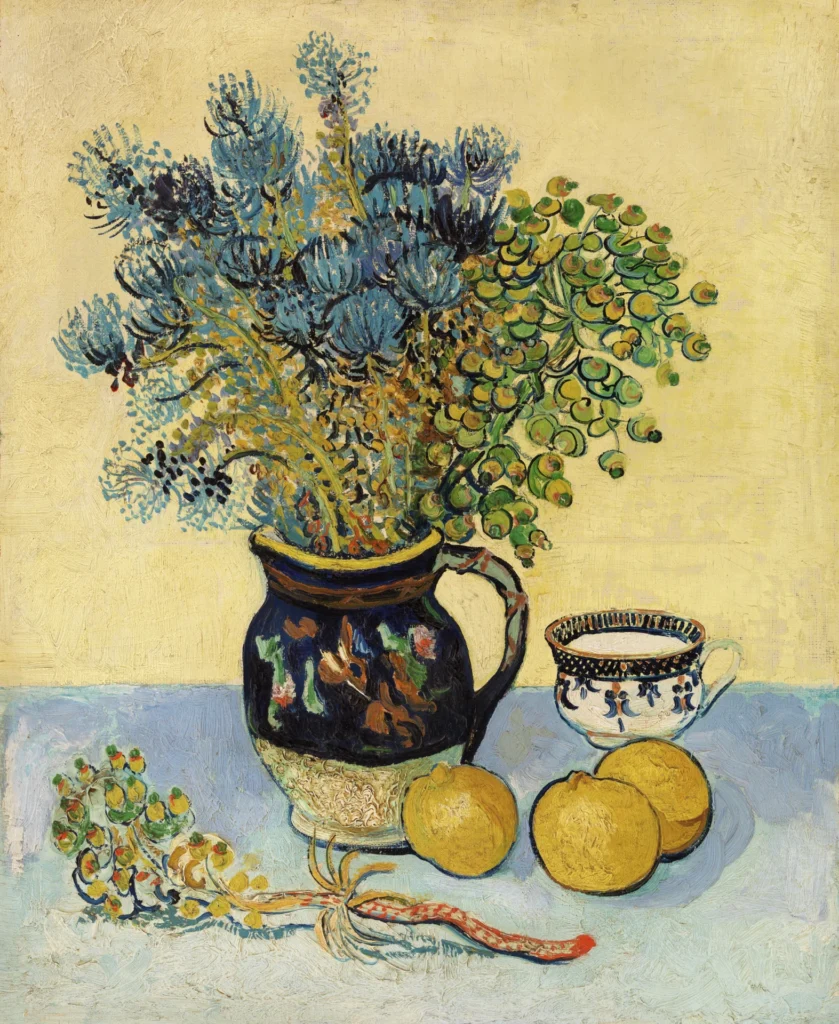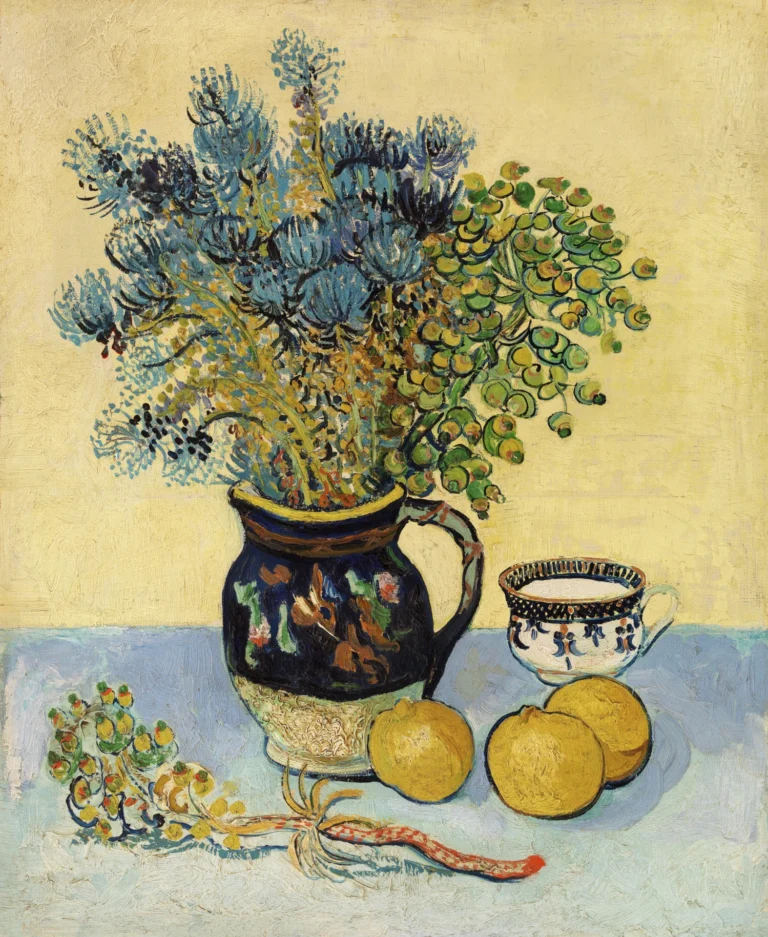Still Life (Nature Morte) (1888)
Vincent van Gogh's Still Life (Nature Morte) is a stunning oil painting created in May 1888. This artwork, measuring 21 3/4 × 18 3/16 inches, exemplifies the artist's transition to a bold post-Impressionist style, characterized by vibrant colors and textured brushstrokes. Created during Van Gogh's prolific time in Arles, the painting reflects both his innovative spirit and his fascination with still life as a genre, making it an essential piece in the study of his artistic journey.
May 1888
About the Artwork
Created in the vibrant environment of Arles, France, Still Life (Nature Morte) marks a pivotal moment in Vincent van Gogh's artistic career. Having recently moved to the south of France, Van Gogh was inspired by the natural beauty and light that surrounded him, which rejuvenated his creative output. This work, painted in May 1888, is a reflection of his innovative exploration of still life, a theme prevalent in his oeuvre. The painting employs bold colors and dynamic brushwork that became hallmarks of Van Gogh’s signature style, illustrating his emotional engagement with the subject matter. Today, it is housed in the prestigious Barnes Foundation in Philadelphia, where it continues to captivate viewers with its vibrant display of nature’s beauty.
Did You Know
The creation of ‘Still Life (Nature Morte)’ falls within Van Gogh’s prolific period in Arles, which he viewed as a sanctuary for his artistic revival. This time saw him experimenting with colors and forms that would later define his legacy.
‘Still Life (Nature Morte)’ showcases the influence of nature on Van Gogh’s work. His daily experiences with the local flora provided him with inspiration and deeply influenced the themes of his still life paintings.
Since ‘Still Life (Nature Morte)’ was created in 1888, it is now in the public domain. This allows for wider access to Van Gogh’s artistry through reproductions, enhancing public appreciation of his works.










